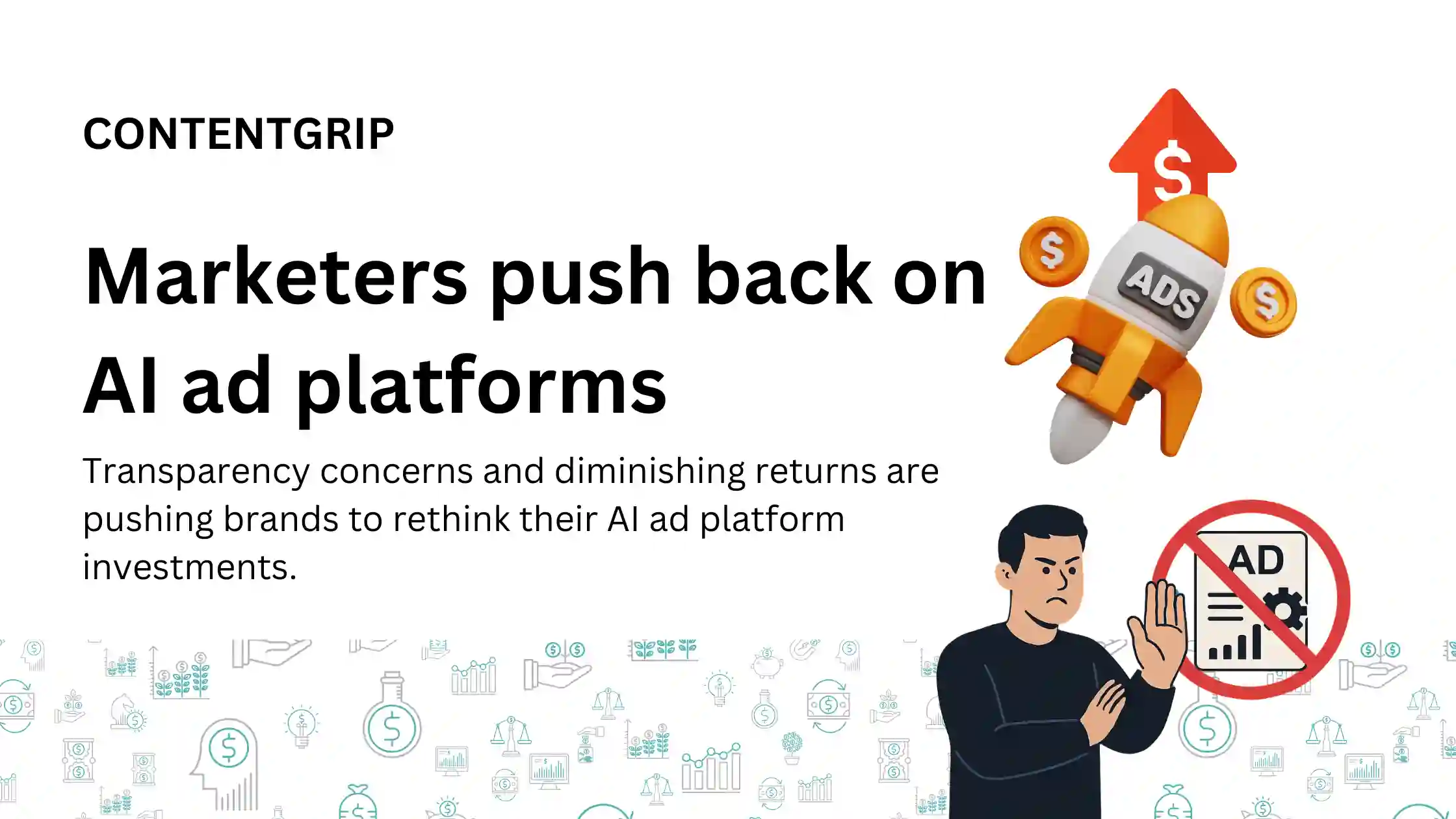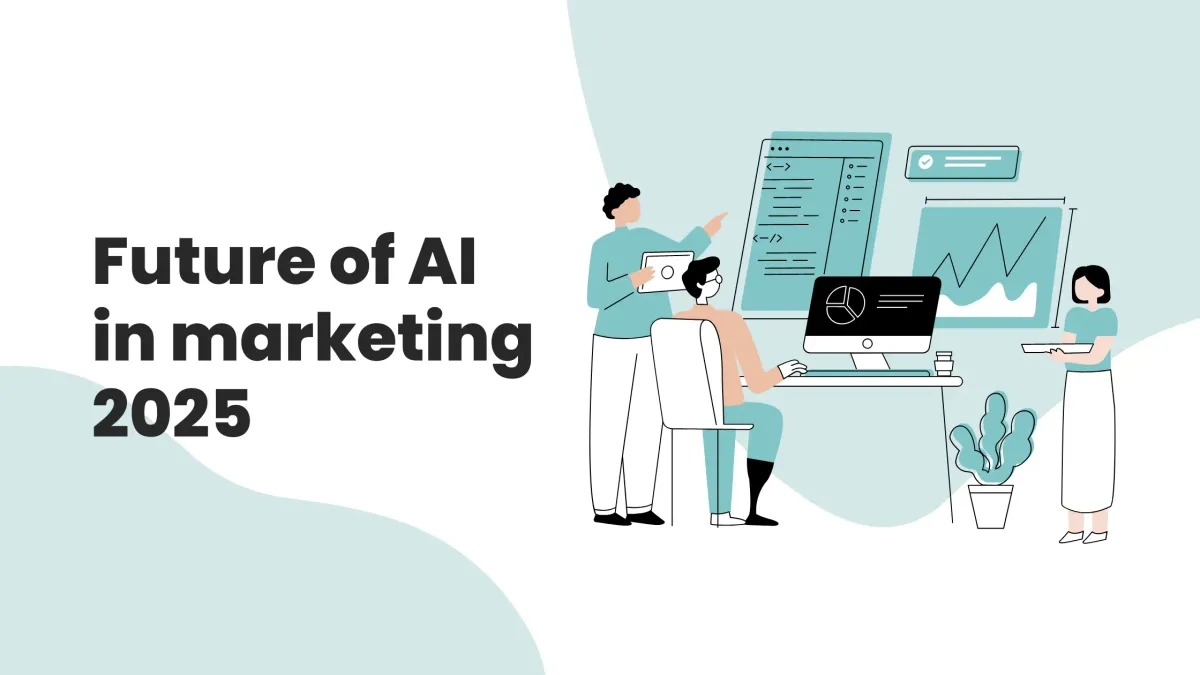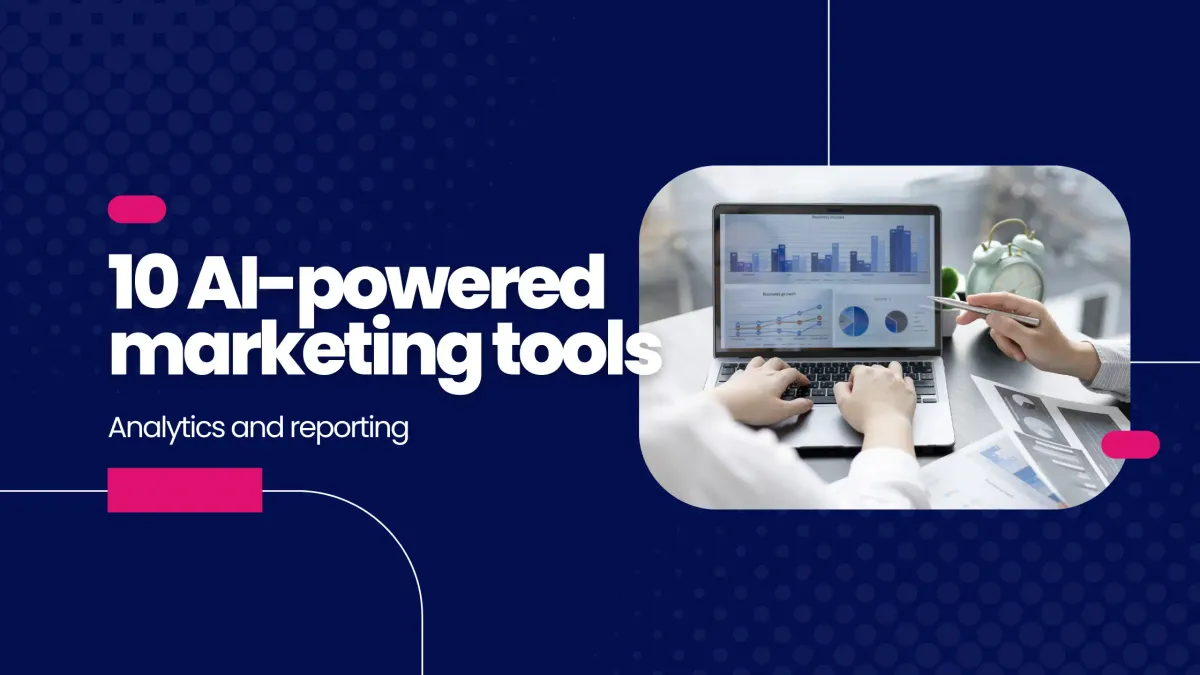Marketers push back on AI ad platforms: What's driving the shift?
Transparency concerns and diminishing returns are pushing brands to rethink their AI ad platform investments.

The promised land of effortless, AI-driven media buying is facing a quiet rebellion.
After years of pouring budgets into black-box solutions like Google's Performance Max and Meta's Advantage+, marketers are starting to pull back—citing transparency concerns, diminishing returns, and a fundamental need to regain strategic control.
While these platforms continue reporting impressive growth figures, a growing number of advertisers are quietly reallocating portions of their budgets elsewhere. This shift signals not just tactical adjustments but deeper strategic questions about how marketers should balance efficiency with transparency in the AI era.
Short on time?
Here's a table of contents for quick access:
- What's happening with AI ad platforms
- Why marketers are pulling back
- The data behind platform performance
- Strategic alternatives for marketers

What's happening with AI ad platforms
Google's Performance Max and Meta's Advantage+ promised revolutionary simplicity: hand over your creative assets and targeting parameters, and their AI would optimize everything else. The pitch was compelling—simplified media buying with supposedly superior results through machine learning.
But the reality hasn't fully matched the promise. Some advertisers are now making significant changes to their platform investment strategies:
- One client at Crowd Louder Media has cut Google spend by 50%—primarily from Performance Max—redirecting those dollars to the open web²
- Sara Kerr of ZGM Modern Marketing Partners reports reducing Performance Max spend for clients after discovering similar CPMs between PMax and traditional search campaigns²
- Some advertisers have transitioned entirely away from Performance Max toward a mix of standard Google ads, search campaigns, and open web alternatives including display, online video, and CTV
This doesn't represent an industry-wide exodus—both platforms continue reporting strong growth numbers—but it does reflect growing skepticism about whether these AI solutions truly deliver optimal value.
Why marketers are pulling back
Several key factors are driving this reconsideration:
1. Transparency concerns
The black-box nature of these platforms means marketers often can't determine:
- Where exactly their ads are appearing
- Which placements drive performance
- How budget is being allocated across channels
This lack of visibility creates both strategic and brand safety concerns.
In her conversation with Digiday², Sara Kerr explained, “Some days it [Google’s Performance Max] might spend almost nothing, and then it might spend double or even triple the budget. I’ve seen it happen,”
“For example, I saw it had such a high CPM though I was sure it was only running in search. They [Google] really do need to allow you to see where all the placements are running.” Kerr highlighted.
2. Diminishing returns at scale
Several marketers report hitting performance ceilings where additional investment yields increasingly marginal returns. This suggests the platforms may be effective up to certain spending thresholds but lose efficiency as budgets grow.
3. Brand safety risks
Recent concerns have heightened awareness of potential brand safety issues. An Adalytics report¹ found some ads being served alongside inappropriate content—a sobering reminder of what can happen when placement control is surrendered.
4. Strategic control concerns
Beyond performance metrics, there's growing recognition that outsourcing too much media decision-making to AI could mean surrendering critical strategic capabilities.
In comments to Digiday², TJ Kropp, head of search at Ramp97, explained, “Their [Google] typical response is “give it time” and trust us to handle your advertising by leveraging our AI,” Kropp adds, “However, when campaign performance using their AI black box dips, there is no ‘why’. The lack of transparency to reproduce or improve upon campaign results is a significant deterrent. It forces us to focus on ‘traditional’, controllable methods that can drive optimal results.”

The data behind platform performance
Despite these concerns, platform metrics tell a different story about widespread adoption:
- Meta reported Advantage+ revenue surpassed a US$20 billion annual run-rate in Q4 2024, growing 70% year over year²
- Tinuiti data indicates over 95% of retail advertisers running shopping ads have adopted Performance Max³
- Performance Max represented 69% of shopping ad spend for the median retailer in Q4 2024²
This suggests that while some marketers are pulling back, many others continue increasing investment—whether from genuine satisfaction or strategic inertia remains unclear.
Strategic alternatives for marketers
For brands reconsidering their platform approach, several alternatives are emerging:
1. Balanced portfolio approach
Rather than all-in or all-out, many marketers are developing mixed strategies that maintain some AI platform investment while diversifying into more transparent channels:
- Splitting budgets between automated and manual campaigns
- Maintaining platform presence while expanding into direct publisher relationships
- Creating comparison frameworks to evaluate performance across different buying approaches
2. Increased focus on first-party data
As third-party targeting continues facing challenges, smart marketers are leveraging first-party data to create targeting frameworks they control, rather than solely relying on platform algorithms.
3. Renewed emphasis on creative quality
With less control over placement and targeting, some marketers are refocusing on creative excellence as their competitive advantage. Quality creative can outperform across channels, regardless of algorithmic optimization.
4. Expanded measurement beyond platform metrics
Developing independent measurement frameworks helps marketers evaluate true business impact rather than platform-reported metrics. This includes:
- Multi-touch attribution models
- Incrementality testing
- Cohort analysis across channels
The current situation represents less a rejection of AI-driven advertising than a recalibration of expectations and approaches.
Smart marketers recognize that powerful AI tools deliver genuine value—but also that surrendering all strategic control creates vulnerabilities.
For B2B marketers navigating this landscape, the path forward likely involves finding the optimal balance point: leveraging AI efficiencies while maintaining sufficient transparency and control to protect brand interests and strategic capabilities.
Sources
- Adalytics. (2025, April 16). Full Report - Are ad tech vendors facilitating or monitoring ads on a website that hosts Child Sexual Abuse Material ?. https://adalytics.io/blog/adtech-vendors-csam-full-report
- Digiday. (2025, March 26). Advertisers are starting to walk away from platforms’ AI solutions that once promised them everything. https://digiday.com/marketing/advertisers-are-starting-to-walk-away-from-platforms-ai-solutions-that-once-promised-them-everything/
- Tinuiti. (2025, April 16). Digital Ads Benchmark Report Q4 2024. https://tinuiti.com/research-insights/research/digital-ads-benchmark-report-q4-2024/





